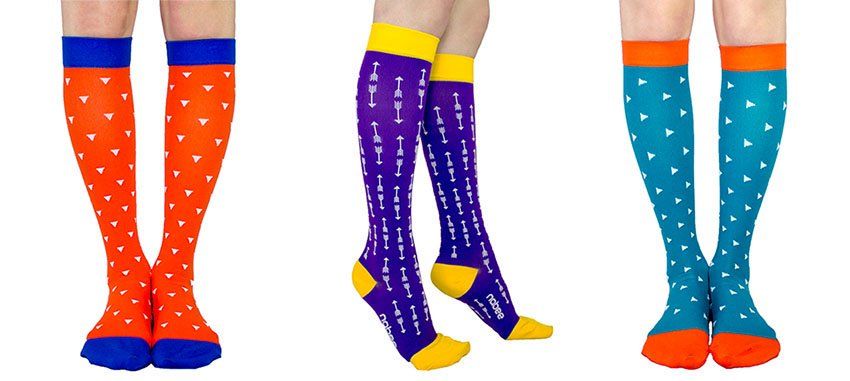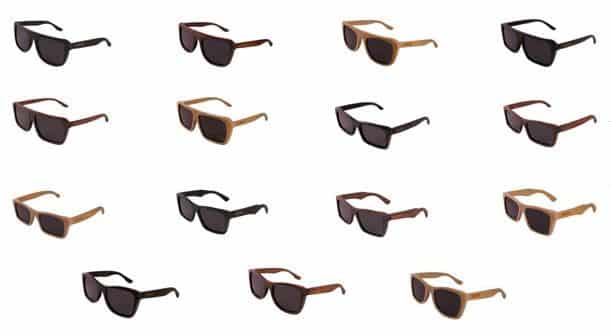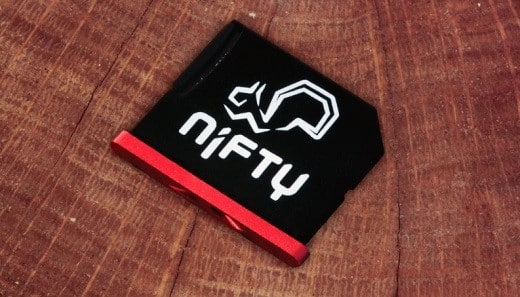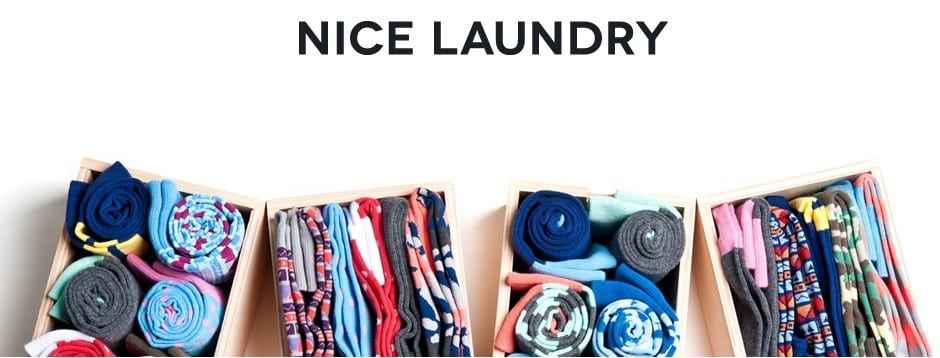In February 2013, Brian Park, R.N. and founder of Nabee Socks wrapped up a successful crowdfunding campaign on Kickstarter, having raised $12,741 in 30 days.
Named after the Korean world for butterfly, his compression socks use a process called graduated compression therapy to reduce leg and foot pain, prevent swelling, and improve post-exercise recovery.
But, there’s a twist. Rather than the staid and neutral color offerings of traditional varieties, Park’s socks are available in designs spanning argyle to stripes and to polka dots.
The project’s mission to add an element of fashion to footwear that’s popular among medical patients and staff took Kickstarter by storm, and the team ended up attracting over 250 backers.
Now, over a year later, the successful, yet modest Nabee Socks Kickstarter campaign has transformed into a thriving business. Park now works with Fulfillrite to help manage the demand for his nearly 300 orders each month.
We had the privilege of talking with Park about what he learned from the crowdfunding campaign and his first year in business. Check out our interview below for tips and advice for navigating the online fundraising arena.
Coming up with the idea.
How did you come up with the idea for Nabee Socks?
Brian Park: I was a nurse at the MedStar Washington Hospital Center in Washington, D.C., and a lot of the doctors, nurses, and patients wore compression socks. The socks tend to be sold in neutral colors, causing the doctors and nurses to wear colorful socks over them to express their individuality. Some of the younger patients, especially the girls, didn’t want to wear the conventional socks with shorts or a skirt.
Also, my roommate teaches cross-fit and the people in her class wear colorful high socks to protect their shins while lifting weights. Because compression socks help with recovery and endurance, this seemed like another area that could be tapped.
The variety of markets that this product touches is interesting. Why did you choose to launch a crowdfunding campaign?
BP: I read The Lean Startup by Eric Reis, which is about testing an idea with minimal investment. Kickstarter was a great means by which to test my idea. If the campaign didn’t succeed, I could assume my idea was not marketable and I could walk away or take a different direction without having invested a ton of money.
I came up with the idea in October of 2012 and launched the Kickstarter campaign in December of that year. I have a graphics background and figured I could make a decent video myself. I put the campaign together in about three days.
Preparing for the campaign.
Who did you work with to fabricate the socks?
BP: Compression socks require a special machine and a city in Taiwan has a number of manufacturers that have them. I went to Taiwan and checked out a couple of the factories. I was concerned about quality since poorly made socks could hurt the people wearing them or just not help them at all.
I found a manufacturer that had basic ISO certification as well as ISO certification for medical devices and I made sure that the company’s socks were FDA registered. I made some modifications to their socks, which was difficult because the company is limited in what they can do with the compression sock weaving process. That all required an investment of about $2,000.
Who were you targeting and how did you market to them?
BP: When I started, I tried to throw a wide net. I was focusing on 22 year olds to 35 year olds who were making at least $45,000 per year. I initially thought that my No. 1 buyers would be athletes—but instead they were mostly nurses, doctors, and people with poor circulation in their legs.
I think I overestimated the number of people in the cross-fit community and the number of marathoners who were seeking funky socks. A lot of the initial marketing was done through word of mouth.
“A lot of the initial marketing was done through word of mouth.”
Did anything happen during the crowdfunding phase that you didn’t anticipate?
Despite Kickstarter providing a lot of visibility, you really do have to rely on your friends and family to get the word out about your product. Very few blogs covered me during the campaign. The larger blogs told me to get back to them when I was fully funded. The smaller blogs covered me and were eventually picked up by bigger blogs and websites, which gave me a lot of traction. I thought I would be able to get in right away, but it’s actually quite a bit more difficult.
“The smaller blogs covered me and were eventually picked up by bigger blogs and websites, which gave me a lot of traction”
How quickly did you shift to order fulfillment following the campaign?
Everything was very quick. My campaign ended in mid-January 2013 and I was fulfilling by the end of February. As I was approaching my fundraising goal, I put in my first order. I air freighted the product to Fulfillrite and was able to fulfill all orders in about a month and a half. I received many emails from my backers—both in surprise as to how quickly the product came and also how happy they were that they didn’t have to wait a year or more to receive their socks. I made up all my costs in that first month.
You came in less than $3,000 over your funding goal—do you think having such a close margin helped you turn over the orders rapidly?
I remember watching an episode of Oprah a long time ago about Spanx and how once the company was featured on Oprah, it had a near-impossible time keeping up with demand. I didn’t want that to happen but it was always in the back of my mind. It was nice to be a little bit over the goal since everything was already planned out for that quantity.
Life After Kickstarter
So, how did you get your first non-Kickstarter customers?
I carried around a big duffel bag filled with the socks—at work, to the gym, and in the back of my car. I was selling tons of socks. D.C. is a very transient city so people, especially the other nurses at the hospital, would leave town and spread the word. One nurse moved to a new hospital in Oregon shortly after the campaign and I started getting hundreds of orders from that city because she had spread the word to her new hospital.
That was repeated at different hospitals. Word just spread organically. Smaller blogs started reaching out. I was approached by the Los Angeles Times and from that point on, which was around September 2013, the word spread fast. I was featured in some hiking magazines, the Chicago Tribune, and a number of other blogs and newspapers. I was getting consistent orders that went far beyond my expectations.
How, if at all, has your business changed in the first year?
I’m still doing most of the work, but I hired a contract graphic designer and someone to take care of customer-service emails. It helps keep my workload down. I am a big proponent of automation, which Fulfillrite is a part of. I don’t have to go to the mailbox every morning and send out 30 or 40 orders.
My accounting is automated through Xero.com; I set it up so that everything is scripted and I check it once a week. During the last four months I have been traveling all around the world. I was able to visit 10 countries and still run my business.
How about refunds? Did you get requests for them?
Yes. That was something that I didn’t anticipate and it’s a good lesson for anyone doing anything related to clothing—and that is sizing. If you’re buying a product in bulk, you have to meet a minimum order quantity of a certain design in a certain size. Industry reports on clothing sizes are costly.
I went to the Library of Congress and was able to find [free] information from 1992 on shoe sizes in the U.S. I based my order off of that sizing, but there were two problems: the types of people who need compression socks for medical reasons tend be heavier set, which means they have bigger calves and therefore need larger sizes; additionally, since 1992 America’s obesity rate has increased, which again means larger calves and larger socks. I ended up needing more extra-large sizes and almost no small sizes. That left me with a lot of extra inventory.
What was one of the biggest challenges faced during your first year?
Marketing. I tried to do search engine optimization (SEO) and Google Ad-words myself and probably sunk close to $1,500 in one month. I hired an SEO company, which was another $2,500 for one month and that didn’t work, either. I was extremely frustrated. I just couldn’t get traction.
I ended up using a grassroots approach—emailing hundreds of blogs. One thing that helped was to keep my emails to three sentences and attach a PDF with the details.I would also offer them free product and other value-ads for bloggers. That all helped me break through, but until I reached that point the marketing was unbelievably frustrating.
“One thing that helped was to keep my emails to three sentences and attach a PDF with the details.I would also offer them free product and other value-ads for bloggers.”
What are you working on now?
I’m working full-time on the socks. The business is doing a lot better than I had ever anticipated. I use my spare time to travel while still maintaining and growing the business. I think people will be surprised to find that once you put in the initial extreme effort and all of those hours, you can get freedom. I never thought I would be making six figures selling socks.
“I never thought I would be making six figures selling socks.”
Nabee Socks fulfills about 200-300 orders and reports around $10,000 in profits per month.
To read more about what it’s like to launch and run a successful crowdfunding campaign, be sure to check out the rest of interviews in this series LINK.
To get Fulfillrite’s custom pricing request a quote.
You’ve done everything by the book. Your Kickstarter campaign is almost ready to launch.
You made a great product. Built an audience. Set up a campaign page.
But how do you ship it?
We put this checklist together to help you get started. It's free.





